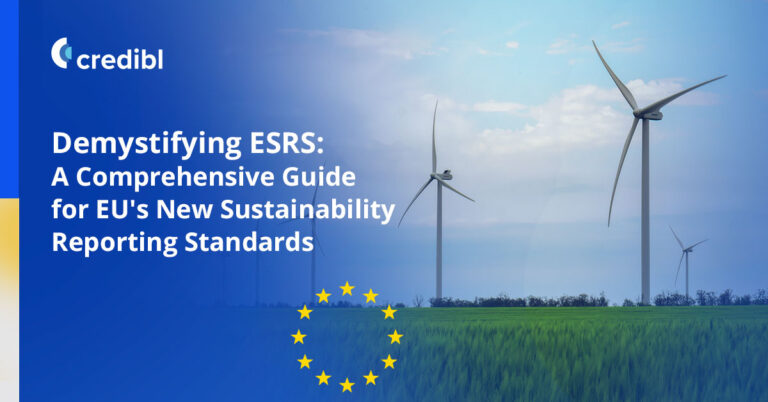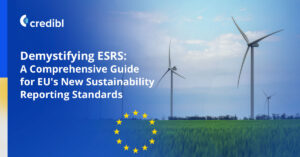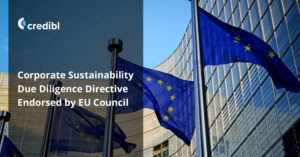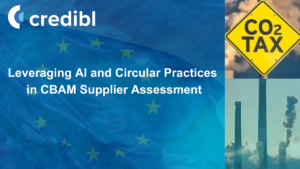In an era where transparency and accountability in corporate sustainability are increasingly prioritized, the European Union (EU) is taking a significant leap towards a more sustainable future with the introduction of the Corporate Sustainability Reporting Directive (CSRD) and its companion, the European Sustainability Reporting Standards (ESRS). This blog post reveals the key features of ESRS, its impact on businesses, and the upcoming changes it brings to sustainability reporting within the EU.
What is ESRS?
The European Sustainability Reporting Standards (ESRS) is a set of mandatory reporting standards that define the format and content of sustainability information companies must disclose. They are a core component of the CSRD, which aims to increase transparency and comparability of sustainability practices among businesses. These standards apply to large companies, listed SMEs, and other entities affected by the CSRD, with phased implementation beginning in 2024. This not only benefits investors and stakeholders, but also encourages companies to actively improve their environmental, social, and governance (ESG) performance.
How ESRS standards are structured?
Cross-Cutting Standards
- General
- ESRS 1 – General requirements
- ESRS 2 – General disclosures
Topical Standards
- Environment
- ESRS E1 – Climate change
- ESRS E2- Pollution
- ESRS E3 – Water and marine resources
- ESRS E4- Biodiversity and ecosystems
- ESRS E5 – Resource use and circular economy
- Social
- ESRS S1 – Workforce
- ESRS S2 – Workers in the value chain
- ESRS S3 – Affected communities
- ESRS S4 – Consumers and end-users
- Governance
- ESRS G1 – Business Conduct
Key Features of ESRS
- Double Materiality Framework: At the heart of the ESRS is the concept of double materiality. This framework requires companies to report on sustainability impacts from two perspectives:
- Financial Materiality (Outside-In): Identifying how sustainability issues can affect the company’s financial condition.
- Impact Materiality (Inside-Out): Assessing the impact of the company’s operations on society and the environment.
- Comprehensive Scope: ESRS mandates reporting not only on direct operations but also on the broader value chain. This includes upstream activities like raw material sourcing and downstream impacts such as product end-of-life management.
- Enhanced Transparency and Traceability: Companies are required to provide detailed and traceable information about their sustainability strategies, including clear explanations of the methodologies used for measuring and reporting data.
Implementation and Compliance
Compliance with ESRS is mandatory for all entities covered by the CSRD. The phased implementation timeline starts in 2024, initially impacting large public-interest entities that were already subject to the Non-Financial Reporting Directive (NFRD). By 2026, the requirements will extend to all large companies and listed SMEs, except micro-enterprises.
Who is Affected by ESRS?
The CSRD outlines a phased rollout of ESRS, impacting companies based on size and reporting obligations. Here’s a simplified breakdown:
- From 2025: Companies already subject to the Non-Financial Reporting Directive (NFRD)
- From 2026: Large corporations with over 250 employees or exceeding specific financial thresholds
- From 2027: Listed SMEs, small credit institutions, and captive insurance companies
- From 2029: Third-country companies with significant EU operations
What do ESRS Reports Include?
ESRS reports will provide a comprehensive picture of a company’s sustainability efforts. Here’s a breakdown of the key components:
- Cross-Cutting Standards: These define general reporting principles, due diligence obligations, and materiality assessments.
- Materiality assessment is crucial, determining which specific ESRS topics are relevant (material) for a company to report on based on their environmental and social impact, as well as financial risks and opportunities.
- Topical Standards: These delve deeper into specific ESG areas, with 10 existing standards covering:
- Environmental issues: Climate change, pollution, water and resources, biodiversity, and circular economy.
- Social aspects: Workforce, value chain employees, communities, and consumers.
- Governance: Management strategy, risk management, corporate culture, and anti-corruption measures.
What are the strategic benefits of ESRS compliance?
Adopting ESRS not only aligns with regulatory compliance but also offers strategic advantages:
- Enhanced Transparency: Stakeholders gain a clearer understanding of a company’s ESG performance, fostering trust and responsible decisions.
- Improved Comparability: Standardized reporting formats allow for easier comparison of sustainability practices across different companies and sectors.
- Sustainable Business Practices: Companies are incentivized to identify and address ESG risks while aligning their operations with the EU’s Green Deal goals.
- Investor Confidence: Standardized reports enhance transparency, enabling investors to easily evaluate a company’s sustainability performance and risks.
- Risk Management: Considering both financial and impact materiality helps companies manage risks impacting their sustainability and profitability.
- Brand Reputation: Companies committed to comprehensive sustainability reporting can boost their reputation and build trust with stakeholders.
Preparing for ESRS
Companies should begin preparing for ESRS compliance by:
- Assessing Current Reporting Practices: Evaluate how current sustainability reporting aligns with ESRS requirements and identify areas for improvement.
- Engaging Stakeholders: Involve key stakeholders in the process to ensure all material aspects of sustainability are covered.
- Investing in Systems and Training: Update reporting systems and train relevant staff to handle the detailed data collection and reporting required by ESRS.
The Road Ahead
Further developments are underway for ESRS:
- Sector-Specific Standards: Specific reporting requirements tailored to different industries are anticipated in 2023 and 2024.
- ESRS for SMEs: Simplified standards catering to the needs of smaller companies are expected in the future.
Conclusion
The introduction of the ESRS represents a significant step forward in the EU’s commitment to sustainable development and corporate transparency. By standardizing reporting practices, the ESRS will not only enhance the quality of information available to stakeholders but also push companies to integrate sustainability more deeply into their strategic planning and operations. As the implementation dates approach, companies must understand these requirements and begin aligning their reporting processes to meet the new standards.
Looking to streamline your ESRS compliance?
Credibl ESG offers a comprehensive suite of tools and expertise to help businesses navigate the new ESRS landscape. From data management to report generation, we empower companies to meet their sustainability reporting obligations efficiently and effectively. Contact us today to learn more!







